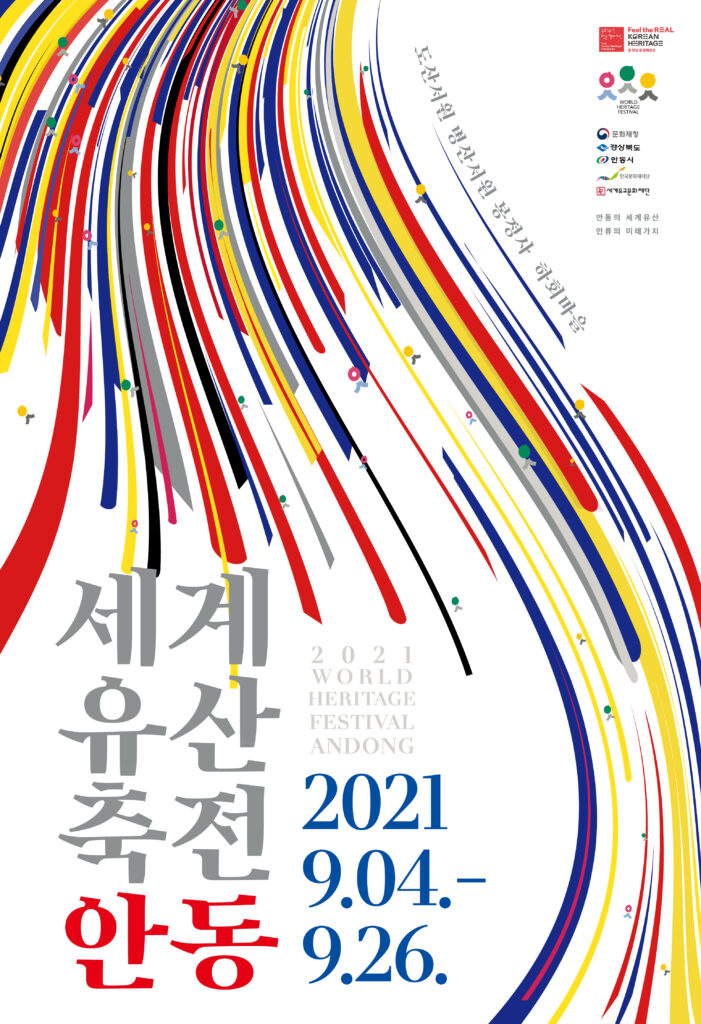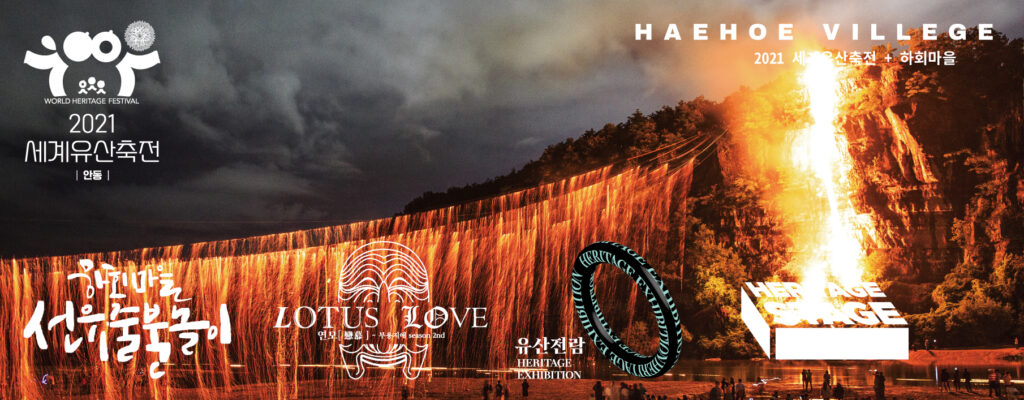The 2021 World Heritage Festival Andong, which is designed to commemorate Andong’s listing as a World Heritage Site, will begin in September. The ‘Seowon of Korea’ is an excellent evidence of Korea’s cultural traditions related to Neo-Confucianism, and its education and social practices continue to this day in large part. Seowon is an outstanding evidence of the historical process in which Neo-Confucianism, which came from China, is transformed to suit the conditions of Korea, and, as a result, undergoes changes in its function, layout, and architecture.The ‘Seowon of Korea’, established in the mid-16th to 17th centuries, is a continuous heritage consisting of nine Confucian institutions representing the types of Neo-Confucian institutions during the Joseon Dynasty, and is an excellent evidence of cultural traditions related to Neo-Confucianism in Korea. It consists of nine seowon, Sosu seowon, Namgye seowon, Oksan seowon, Dosan seowon, Pilam seowon, Dodong seowon, Byeongsan seowon, Mooseong seowon, and Dosan Seowon, which span the central and southern parts of Korea. Seowon is an excellent evidence of Neo-Confucian education institution introduced in China and widely disseminated Neo-Confucianism in all aspects of Korea.

The local intellectuals of Seowon have created an educational system and a tangible structure in which they can devote themselves to learning. Learning, orientation, and interchange were key functions of Seowon, which are well illustrated in the layout of the building. Seowon was led by Sarim, a local intellectual, and developed and flourished as the center of the village according to the interests of Sarim.
The most important factor considered for the location of the Seowon is its association with Zen. The second element is the landscape, which is located close to the mountains and water for natural observation and mental and physical training. An open building in the style of Numaru in Seowon facilitates the connection with such scenery. Scholars studied Neo-Confucian classics and literary works, tried to understand the universe and become ideal human beings, oriented late Joseon Neo-Confucian scholars and formed a strong academic pedigree.

Furthermore, it greatly contributed to the widespread dissemination of the principles of Neo-Confucianism through various socio-political activities based on Seowon. Hosted by the Cultural Heritage Administration and organized by the Korea Cultural Heritage Foundation, the World Heritage Festival will be held at four World Heritage sites for the second time this year, continuing from Andong in August (already reported last month) to Jeju in October. Four festivals will be held as a World Heritage Festival. In particular, it will be held from September 4 to 26 at the Lower Village, Byeongsan Seowon, and Dosan Seowon in Andong-si. In Hahoe Village, a heritage banquet will be held under the theme (Inheritance exhibition), and we want to convey the meaning of playing under the “Andong Banquet.” The exhibition consists of various media exhibitions, Korean language exhibitions, and permanent art zones, including 60 treasure exhibitions of World Heritage sites. Under the motif of Hahoe village’s Hahoe mask birth story, programs were prepared to perform a silent play Lotus Love with the Russian Marinsky Ballet, hold a midnight feast exhibition, and experience traditional Korean music. The event is designed to respect the importance of cultural heritage despite the coronavirus. Dosan Seowon will also hold its first night opening in 455 years, a concert featuring modern music dances (Dosan 12 songs) under the theme of Maehwa poem by Toegye (the most famous scholar of Joseon)
Italy, which has the largest heritage in the world. The Italian Tourism Organization said on the 27th that Palermo’s Arab-Norman ruins, Chefalu, and Monreale’s Bishop’s Cathedral were listed as UNESCO World Heritage sites in July at the UNESCO World Heritage Committee. The World Heritage Site was selected and listed as social, cultural and religious sites from the Norman Kingdom, which ruled the northern coast of Sicily from 1130 to 1194. “These buildings represent the coexistence of people with different roots and religions, including Muslims, Byzantine, Latin, and Langobard, as well as Western European, Islamic and Byzantine cultures, as well as providing new concepts of space, structure and decoration,” an Italian tourism official said. The newly registered heritage is Italy’s 51st registered heritage, which has maintained Italy’s position as the world’s largest cultural heritage. However, it is truly amazing and exciting to introduce a cultural brand in a region that is empathized and moved by finding the values and meanings contained in the historical and cultural heritage of Korean heritage.
Matthew Kwak
Asia Journal



